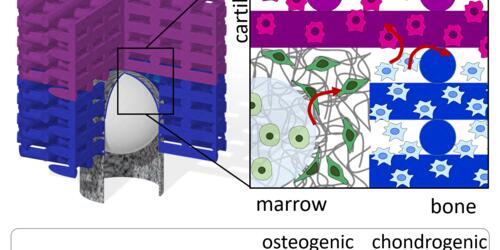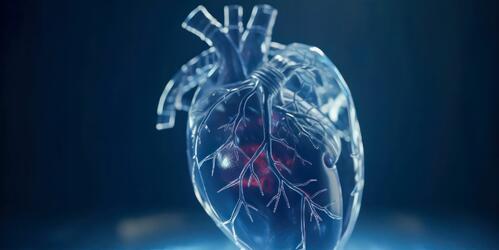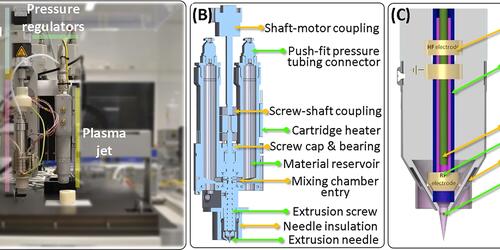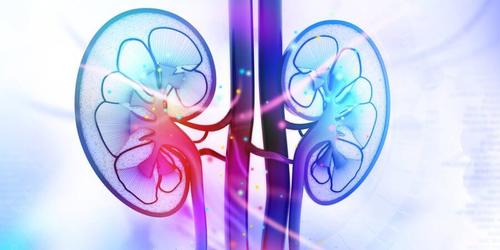Research
Overview
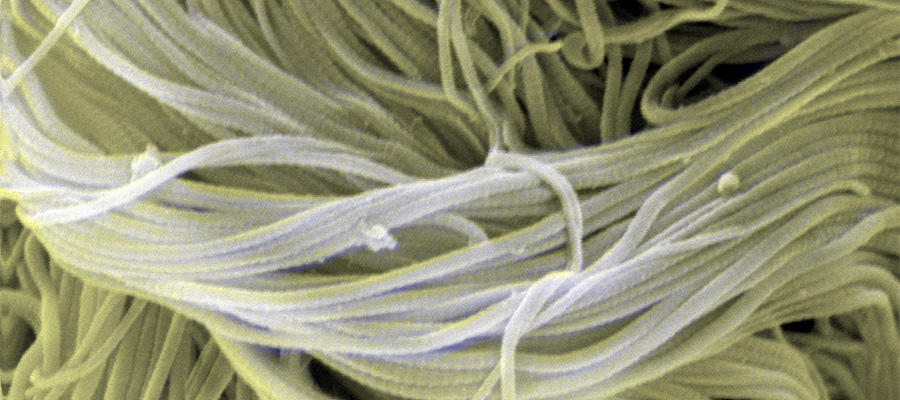
Biofabrication strategies able to create smart constructs to direct cell fate hold the potential to be applied in several regenerative medicine applications and provide solutions to current regeneration challenges. The core activities of the group evolve around acquiring and implementing knowledge for biofabrication technologies based on the following research objectives:
Design of scaffolds able to control and steer (stem) cell activity
Stem cells are a fascinating and promising source to regenerate tissues and organs due to their potential to differentiated into multiple specialized cells. Yet, better control over cell-material interactions is necessary to maintain tissue engineered constructs in time. It is crucial to control stem cell quiescence, proliferation and differentiation in three-dimensional scaffolds while maintaining cells viable in situ.
[read more]
Develop current and new biofabrication technologies based on additive manufacturing, bioprinting, bio-assembly, and electrospinning.
Among biofabrication technologies, bioprinting, additive manufacturing, bio-assembly, and spinning technologies form crucial clusters that shall be used for this purpose. These technologies will be further advanced in the future to include surface engineering methods during fabrication.
[read more]
Integrate neural and vascular cues in tissue and organ regeneration strategies.
Initial investigations on how different biofabrication platforms could be combined to recreate a synthetic mimicry of the ECM of the peripheral nervous system have been started. The goal in the coming years is to complement this know-how with vascularization and understand how neurovascular stimuli can modulate tissue regeneration.
[read more]
Engineer the immune response of biomaterials, scaffolds, and biomedical devices.
Engineered devices with surface properties able to steer the foreign body response to synthesize a vascular graft for dialytic patients have already been successfully created. Further deepening our understanding of how biomedical implants can be engineered to steer the foreign body response is an exciting field in regenerative medicine as it will allow to improve the integration of biofabricated substitutes with surrounding tissues.
[read more]
Apply biofabrication technologies to study regenerative and degenerative phenomena
3D constructs could be used as 3D in vitro models to understand biological mechanism behind tissue regeneration, homeostasis, and eventual degeneration. This will be fed back into the design of biofabricated constructs to achieve on one side a better 3D construct, on the other side possible new therapies for targeted diseases.
[read more]
In vivo 3D Screening from Lorenzo Moroni on Vimeo.
Anatomically shaped 3D plotted scaffold from Lorenzo Moroni on Vimeo.

